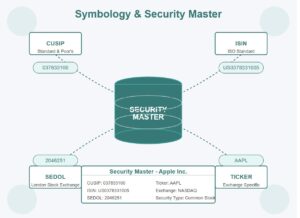Home Education center Is Direct Indexing Active Management?
Is Direct Indexing Active Management?
Table of Contents:
In the world of investment management, the distinctions between active and passive strategies have long been drawn. For financial advisors and retail investors, understanding these distinctions and the rise of direct indexing can unlock new opportunities for portfolio optimization. But where does direct indexing fall on the active-passive spectrum? The answer is both nuanced and revealing—it’s a hybrid approach that encapsulates the best of both worlds.
The Answer: Yes and No – Direct Indexing is a Hybrid Approach
Direct indexing holds a unique position in the investment world. At first glance, it borrows elements from both active and passive management strategies, creating a sophisticated approach designed to cater to individual needs and enhance after-tax returns.
– Passive Elements
Despite its innovative allure, direct indexing rests on a foundation crafted from passive investing elements. Here are the core passive components embedded in direct indexing:
- Index-Based Construction: At its heart, direct indexing emulates the structure of a chosen index. Instead of holding shares in an index fund, a direct indexing strategy involves purchasing the underlying securities of the index directly. This replicates the index’s performance while affording additional customization.
- Market Exposure Targeting: Direct indexing captures broad market performance, giving investors diversified exposure while adhering to a passive approach of mirroring, not outperforming, market returns.
- Systematic Implementation and Rules-Based Approach: The systematic nature of direct indexing means it follows predetermined rules to manage portfolios. This rules-based system helps maintain consistency across implementation and reduces the influence of emotional decision-making.
- Benchmark Tracking Focus: Like passive strategies, direct indexing aims to track a benchmark—or slightly outperform it through tax efficiency—without relying on stock picking for alpha.
– Active Elements
While its passive components are evident, direct indexing does possess a flair for the active. Here are some ways direct indexing brings active management into the fold:
- Security Selection Flexibility: Direct indexing allows for significant flexibility in terms of the individual securities one chooses to own. This element of customization is a hallmark of active management, enabling investors to tailor portfolios to specific needs such as ESG criteria.
- Tax-Loss Harvesting Decisions: One of the significant active aspects of direct indexing is active tax management, particularly tax-loss harvesting. By harvesting losses, investors can offset gains, thereby potentially minimizing overall tax liabilities—a decision process that requires active monitoring and diligence.
- Custom Constraints and Rebalancing Choices: Portfolios can be tailored by including or excluding stocks, sectors, or industries, with rebalancing ensuring risk alignment and tax efficiency.
- ESG/Factor Implementation: Investors today increasingly consider environmental, social, and governance (ESG) factors. Direct indexing accommodates these preferences, allowing for a tailored factoring of such criteria, which traditionally falls under the active management umbrella.
Why Direct Indexing is Different From Traditional Active Management
While direct indexing includes active elements like customization and tax management, it stands apart from traditional active management in key ways:
- No Market Timing: Unlike active managers who frequently attempt to time the market to capture gains, direct indexing adheres to a buy-and-hold approach that aligns with the passive philosophy.
- No Sector Rotation: A direct indexing strategy does not engage in frequent rotation between sectors based on economic forecasts or market cycles.
- No Individual Stock Selection Based on Fundamentals: Direct indexing doesn’t involve picking individual stocks based on in-depth fundamental analysis or forecasts—hallmarks of traditional active management.
- No Attempt to Beat the Market: The primary aim is not to outperform the index, but to replicate it in a more tax-efficient manner.
- Systematic Rather than Discretionary: The execution is methodical, guided by preset rules and strategies rather than discretionary decisions.
Why Direct Indexing Is Not Purely Passive
Despite its largely passive investment philosophy, direct indexing cannot be entirely classified as passive due to the following reasons:
- Individual Security Ownership: Investors directly own the individual securities of the index, unlike in index funds where investors hold shares in the fund.
- Active Tax Management: Direct indexing actively monitors and harvests tax losses, a stark contrast to purely passive strategies.
- Portfolio Customization: Investors can tailor their portfolios to align with personal preferences or investment philosophies, deviating from the purely set composition of traditional index funds.
- Trading Decisions and Risk Management Choices: Direct indexing involves making active trading decisions, especially concerning tax strategies and customization, allowing for more detailed risk management.
Real-World Application of Direct Indexing: Systematically Active, Strategically Passive
Direct indexing is best perceived as “Systematically Active, Strategically Passive”:
- Passive in Investment Philosophy: It largely adheres to the principles of passive investing—maintain market exposure without attempting to beat it.
- Active in Implementation: The portfolio customization and tax strategies integrated into the process bring active management traits.
- Systematic in Execution: Predictable, consistent application of strategies distinguishes it from the discretionary nature of active management.
- Rules-Based in Decisions: Predetermined rules guide the portfolio’s management, ensuring structured execution.
- Tax-Aware in Management: Designed to enhance after-tax returns, direct indexing focuses intensely on tax efficiency.
The Bottom Line
Direct indexing is a game-changer in investing, combining active and passive strategies with a systematic, tax-efficient approach. Ideal for financial advisors and retail investors, it offers flexibility, customization, and smart tax management—without relying on market predictions.
Related Pages
Offer personalized experiences for every client at scale




